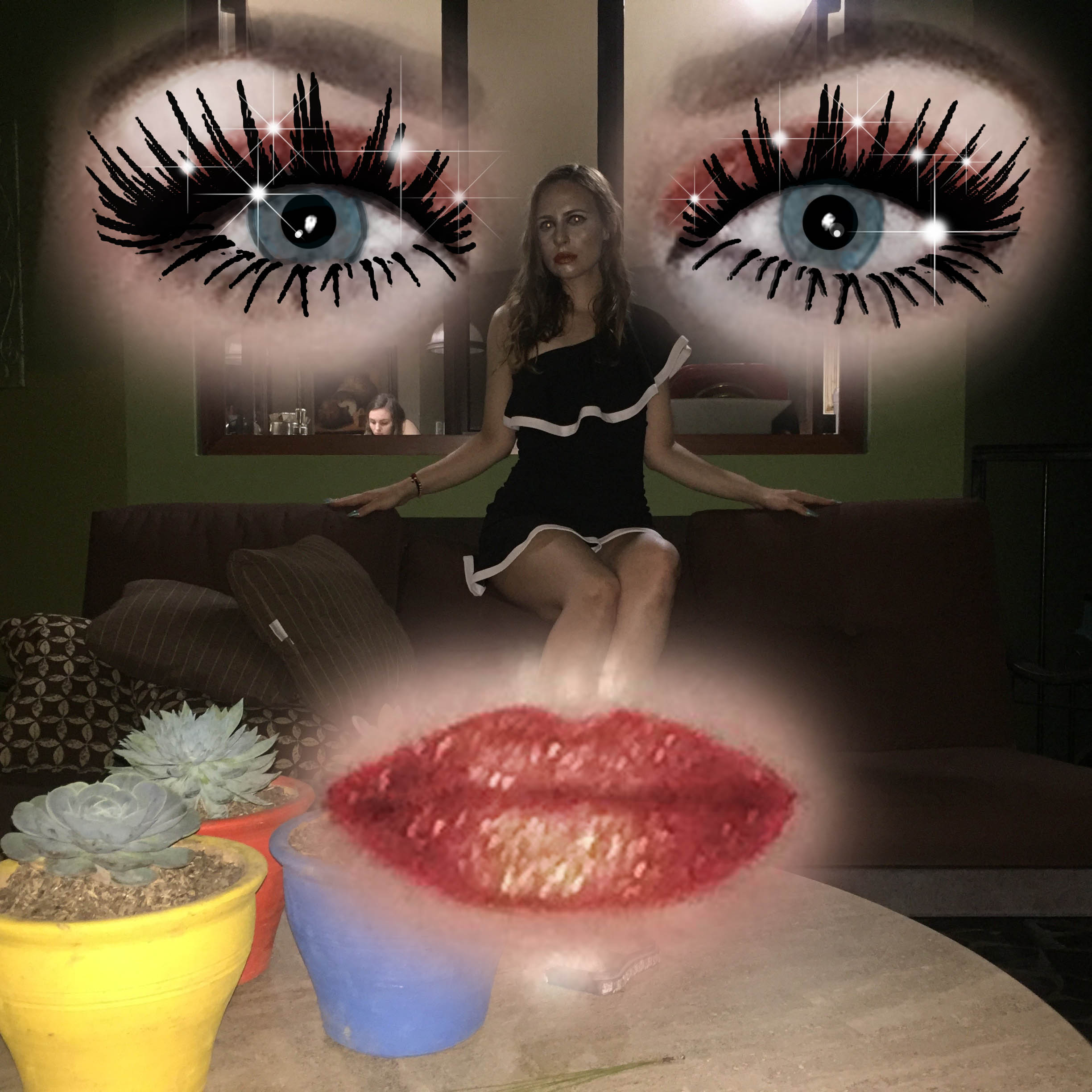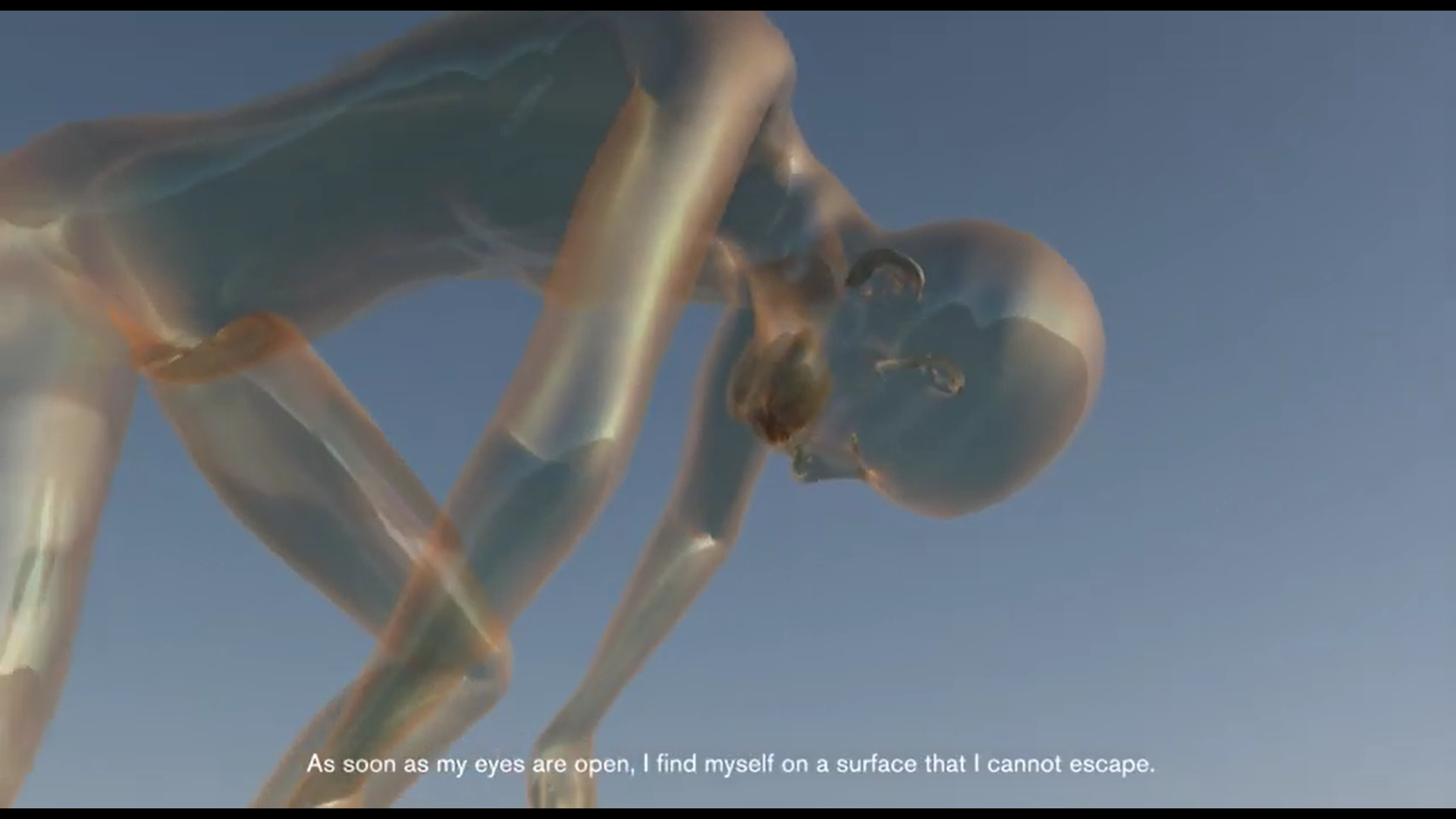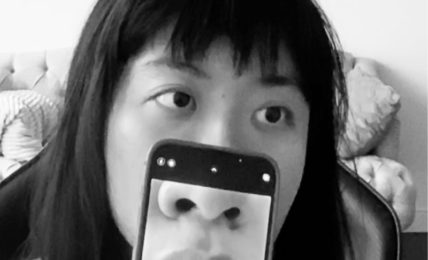Mike and Claire are an artist-duo based in Brooklyn. Meeting in a SVA darkroom, the two became fast friends and eventually roommates, creating a unique artistic and social environment around themselves that finds its way into much of their work. Blending an array of tropes and characters, their work has something between the anxiety of Eraser Head and the camp of Bye Bye Birdy, all with a Ryan Trecartin sense of schizophrenia. Within their affect-driven narratives they skirt along the edges of beauty and expression, exploring unconvention with an ecstatic willingness. You can see their work in Cameron Gray’s show GYMNASTY at Mike Weiss Gallery, which is up until January 3.
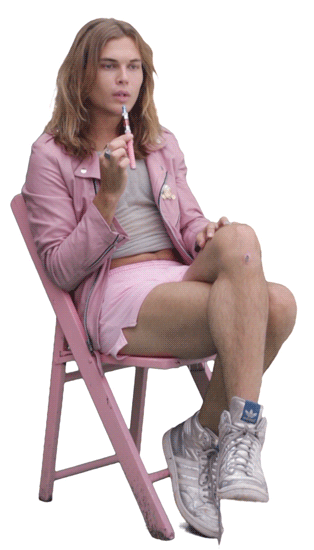
diga.rt: I’ve followed Mike on Flickr for years and I distinctly remember the first time I noticed the two of you forming a collaborative pair, which was with the series See Jane Run (link is no longer available). The series holds many of the characteristics of your work to this day: There’s the Cindy Sherman-esque appropriation of characters, as well as their surreal displacement from the world around them. This was then followed by a series of schizophrenic videos such as the Gem Sisters (link is no longer available) or No Commercials Just Adds (link is no longer available), which felt radically different than anything I’d seen from Mike previously. How organic was the transition to working together? How would you say your process has changed as you’ve settled into your relationship?
M: I remember following your work pretty closely too Kenta. Sometimes I think the most important years of my life while ‘working as an artist’ were actually spent online in high school. I learned how to take pictures from being in an online community, how to collaborate, and talk about work. No matter what work I’m making whether it be with Claire or not, I want it to be convincing. I fell in love with fashion because it is a theater production, it’s about convincing an audience to fall in love with a story. It’s fake. I work in NYC as a model now too, and I really understand how much of a magic show it is. That’s where people get confused with my photography work, and take it too seriously. It’s all an act. It’s important to look back at old work, but in small doses. If you do it too much there’s an anxiety that takes a long time to go away. I’m always only interested in what is next, I need that excitement. That’s what got me through middle school and high school as a kid, was looking forward to making work to put online.
Claire and I started working together because she would make clothes for my pictures, and we realized we were doing small theater productions . Then we started doing projects together, very organically and quickly. I’m able to relax more and experiment with Claire because it’s purely about making work. I have always loved cartoons and color, and we both are interested in that. We don’t care about who comes up with an idea, or what name gets put onto something. We care about getting the work done and getting it up and running as a living thing. That’s what we share in common more than anything, is the need to make work and bring something to life.
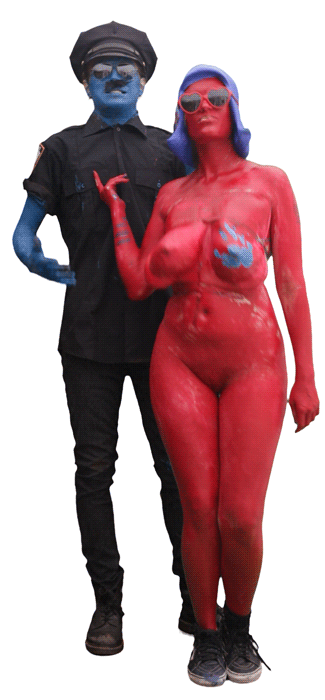
C: Growing up, I wasn’t really involved with the internet the way Mike was. I just kind of knew what I liked from what I saw and experienced growing up in NYC and then spending a lot of time in LA. I remember when it came time to apply to art school, I had all this stuff I was really into doing and I settled on going for photography.
I think when we started working together before (M+C) we were involved with theatre in different ways. In high school I performed a lot and did whatever I could to help with production for plays. So by the time we started seriously working together, I think we were both at points where we were over the seriousness of art school. During that time, we had put so much effort into our personal projects, making “serious” work. That’s definitely something that has stayed constant is keeping it serious, but serious fun. Half way through SVA, I decided I wanted to move away from still imagery and make videos and gifs. I really feel passionate about moving forward and not thinking too hard about past works. When they are done they kind of don’t exist to me in a weird way. I really love making films and videos, and it’s neat to feel like Mike and I have come to a point where we are comfortable working with multiple mediums. Whatever we feel fits the project.
The Cherub Garden (video is no longer available) from MikeandClaire on Vimeo (2014).
diga.rt: The use of nodels has become pervasive in fashion lately, with brands casting artists that then bring their followings and aesthetics to the campaign in ways more traditional models cannot. Both of you have appeared in numerous spreads, but before that (and still) you appeared in numerous shoots taken by your friends and classmates. I always found it interesting to see artists adopt the aesthetics of their friends, especially when they have strong, conflicting social media presences of their own. Do you think this role-playing has had an effect on your work? How do you think social media prepared you for your type of net-based performance?
C: The use of nodels in fashion right now is a marketing ploy so that companies don’t have to pay people as much for their time and effort. Artists who are used for fashion deserve to be treated with the highest respect.
The role playing for other people is acting. Mike and I like taking on different characters. I think that the only tie that we have to our net-based work is that you can view it online. Our inspirations come from more IRL experiences and storytelling that get put into this space. I think that we are finally at a point where our work is taking on more of a physical realm.
Ghost Hole (video is no longer available) from MikeandClaire on Vimeo (2014) – Made for Neverland Space
diga.rt: Much of your work draws from a wide range of influences. In Fried Eggs (link no longer available) there’s the George Méliès use of sets and in-camera effects, in The Chase (link is no longer available) there’s an expansion of the comic format with a Scooby Doo-style humor, and in Mars (link is no longer available) there’s the use of GIFs currently being established through advertising. People always talk about your archetypal characters, but you also seem to be interested in archetypal modes of expression. What about this intermingling of mediums interests you?
A big part of making a project for us is figuring which medium to use. After we decide that we need to figure out what kind of equipment to match the narrative. If we are trying to be romantic we may shoot on film or a home video camera, if we want something to be modern we may use an iphone or 5d mark ii. That makes people uncomfortable I think, because our work doesn’t always match up to be one singular idea. It all looks different. The medium is the most important thing though, because you can reference a mood or time period by being selective in that way. It helps the work be accessible to wider range of people.
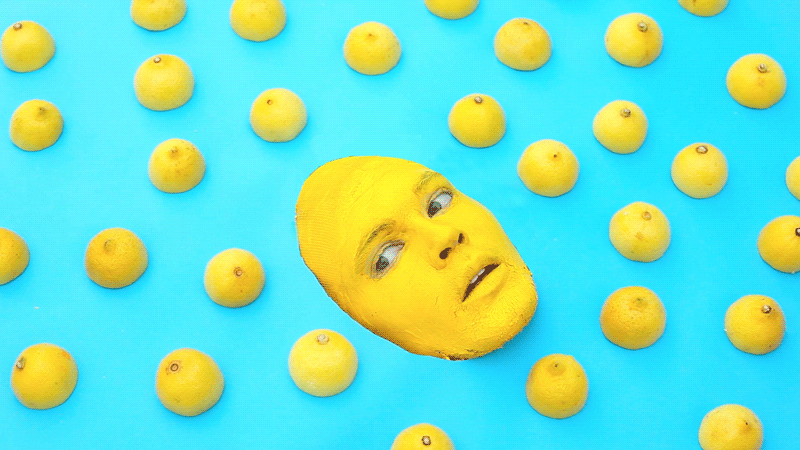
diga.rt: You’ve collaborated with numerous figures from the NY queer/ feminist scene – Kembra Pfahler, Juliana Huxtable, and Hari Nef to name a few. You’ve also cited other iconic queer figures as inspiration, such as Cindy Lauper and Nina Hagen. Although you’ve been exhibited and published in queer contexts, your work is typically discussed around more formal themes… How do you see your work fitting into the queer/ feminist discourse?
M: Our work is very feminist based and very queer. I am queer and also a feminist, and we both try to champion artists we really love in our work. So using our mentors or friends in our work is important to us. Being the male counterpart in our duo, l never want to make work about how I have a penis. I find that’s really common with male performers. I want men to be objectified, and feminized. Being uncomfortable or embarrassed is important to our work, and I think if you are male and a feminist, it’s important to feel uncomfortable, and want a change in the world. Our work features women pretty heavily and plays a lot with drag. One thing we’ve learned from the queer community is how to revolt through the idea of being joyful. That’s a radical idea with artists today, is being happy. We want to talk about issues that are important to us in our work, but in an accessible colorful way.
C: Feminism and queerness play into our work heavily. I like to take on roles in our work that are aggressive and high energy. So often high energy and aggression are automatically masculine when really it’s just giving your 100%. We like to depict women as powerful human beings. Its important to allow yourself to feel embarrassment and shame because those are huge parts of being a human being. Pleasure is an important tool which we use because we wouldn’t do this stuff if it weren’t fun. I’m so fifty/fifty, half anger and half laughter. There’s just a lot of work to be done.
diga.rt: Despite the fact that all your collaborative work has been digital, you’re repeatedly referred to as performance artists. I think there’s something incredibly haptic about your work, perhaps because you appear in many of your own videos or because so much of it is improvised. I know you’ve both expressed an interest in moving into haptic spaces, but could you speak to the benefits and drawbacks of performance online?
Our work is created under the practice of “availablism,” an idea created by Kembra Pfahler. We use the materials and mediums we have available to us to make work. The internet is an awesome thing we use to make our work move, especially with GIFS and video, but the drawback is you are labeled as an online artist very quickly. We came up with our own term called “ingineering” that works under the idea of availablism. Ingineering is about using older in camera techniques, set design, and visuals, but while incorporating modern technology. It’s not anti-CGI or anti-greenscreen, it’s just more special affects based. Which in the history of animation falls under the category of “in-camera technique.” It deals a lot with imperfections and hand made spaces. Putting this work online is important because it allows for there to be another genre besides just “online art.”
Gem Sisters: Episode 1 (video is no longer available) from MikeandClaire on Vimeo (2013)
C: I still stand by this. It’s not reasonable to expect to find all the answers in one piece. I know that for me, working in smaller projects helps me just stay more focused. I like being able to look at an artist’s body of work and attempt to figure them out through the stages of it. Mike Kelley is a good example of someone who worked sporadically. When I went to his retrospective I found myself being able to understand his mind a little by how rapidly he allowed himself to make work and also never keep within the same style. It’s really just chipping away at stuff you have in your head constantly and being patient and over excited at the same time.
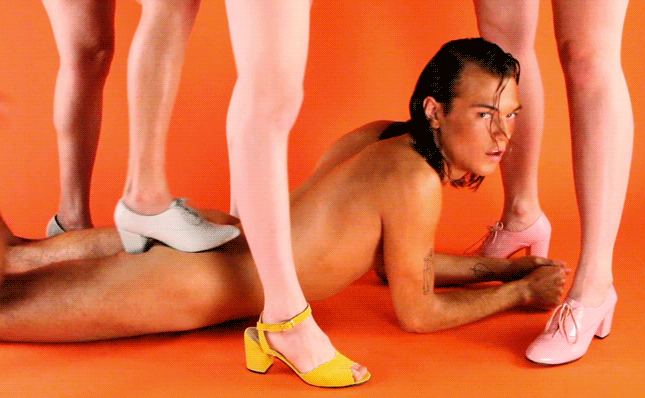
Any videos or links our readers ought to know about?
Everybody should read Keith Haring’s journals. That’s the real bible.
:::FIN:::
Remember to check out more of Mike and Claire’s work here.

